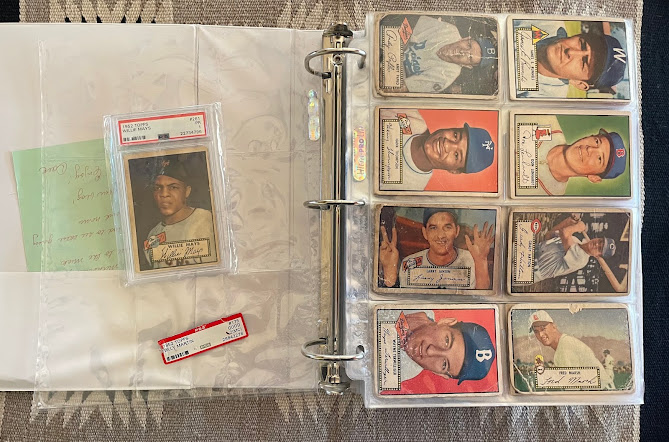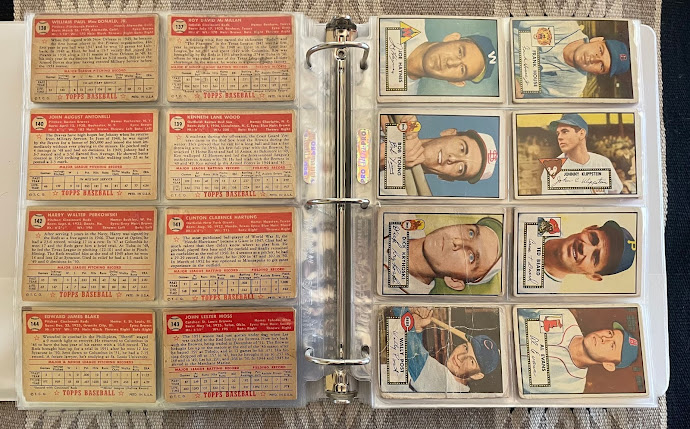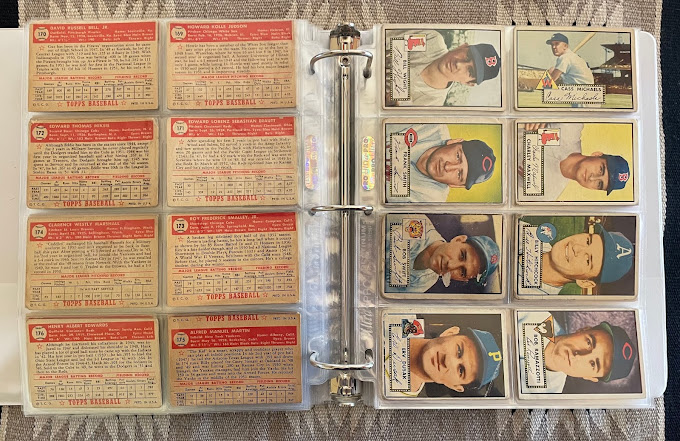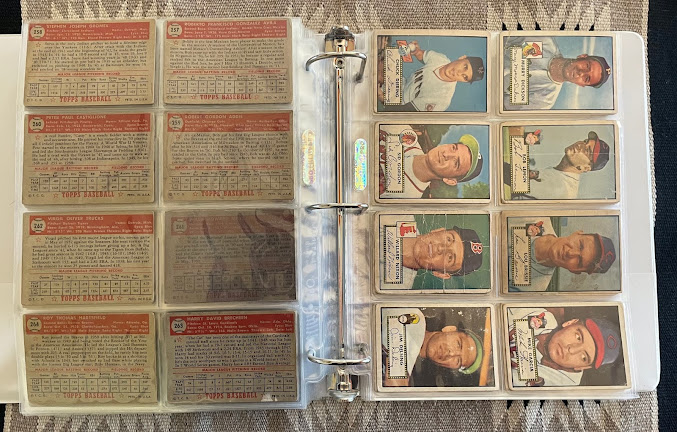When it comes to my sets, I sleeve them and keep them in 3-ring binders. My 1952 set build effort is not exception. I view the Topps base set as a sort of year book, or almanac, for every major league season. A historical record that should be looked at and enjoyed. That's not easily done when they're kept in the rectangle boxes. Prior to starting this '52 set, I didn't even know there were 8-pocket pages to sleeve these slightly over-sized cards in. Having now completed and sleeved the first 310 cards (plus 2 high numbers), I find the 8-pocket pages to be very aesthetically pleasing, and thought I would try to share how it came out. So here's a look:
The last two cards on that final page, the Campanella and the Dressen (yet to get a post of it's own) are high numbers and out of place. The slot that Roy is in actually should belong to Mickey Mantle, but it's unlikely the Mick is going to find his way there anytime soon. That said, I hope to continue to add the periodically high number here there, probably through trades, but it's not really a priority at this point.







































Completely agree that a set should be paged through like a yearbook. I never understood storing your pride-and-joys in a box.
ReplyDeleteI think this post will look quite similar to what I'm going to do for another vintage set in the near future.
I agree. I have all my 1950s-70s cards in binders (one card per pocket - none of that doubling up stuff), but the '86 to '92 factory sets I bought are still in their boxes. I don't have enough interest in them to put in binders (even though I pre-purchased enough binders and pages).
ReplyDeleteWhat I do differently than others is group the cards by team, not in numerical order. Why? Because I don't care about numerical order. Having all players for a team together gives a better review of the team and season.
Awesome, but hard to enjoy the set in numerical order. It's like holding the set for someone else rather than owning it for yourself. Make your own ordering for the set. "Play cards".
ReplyDelete